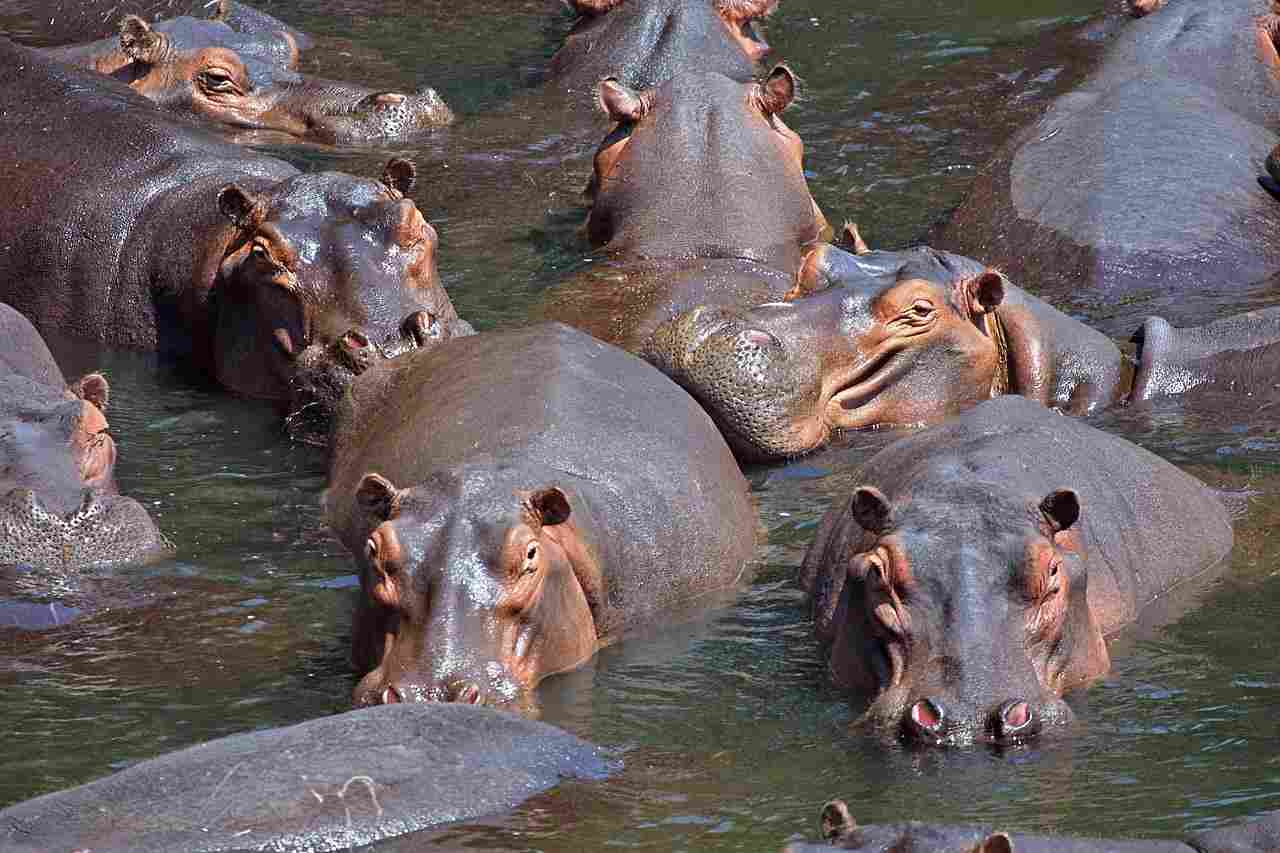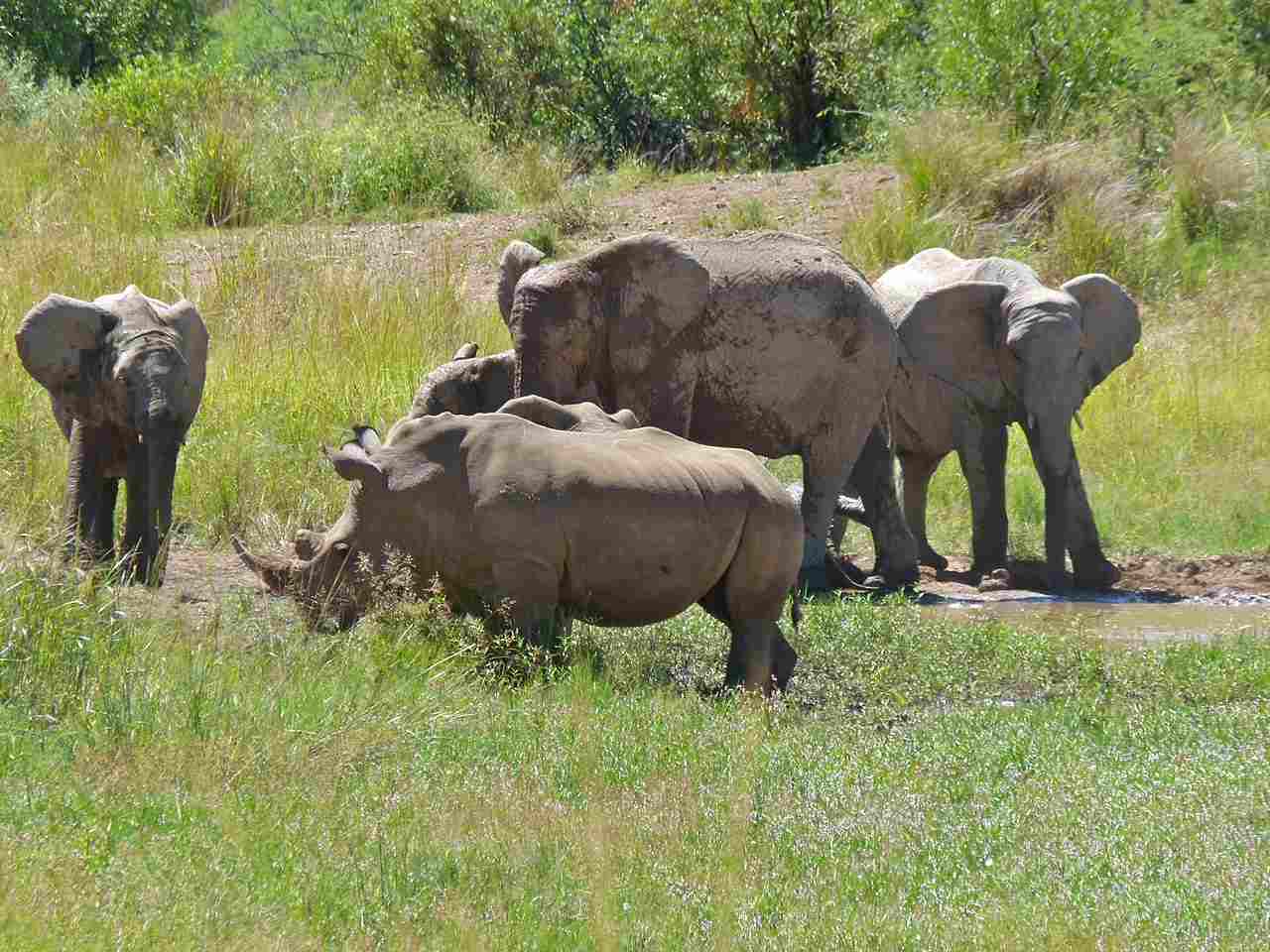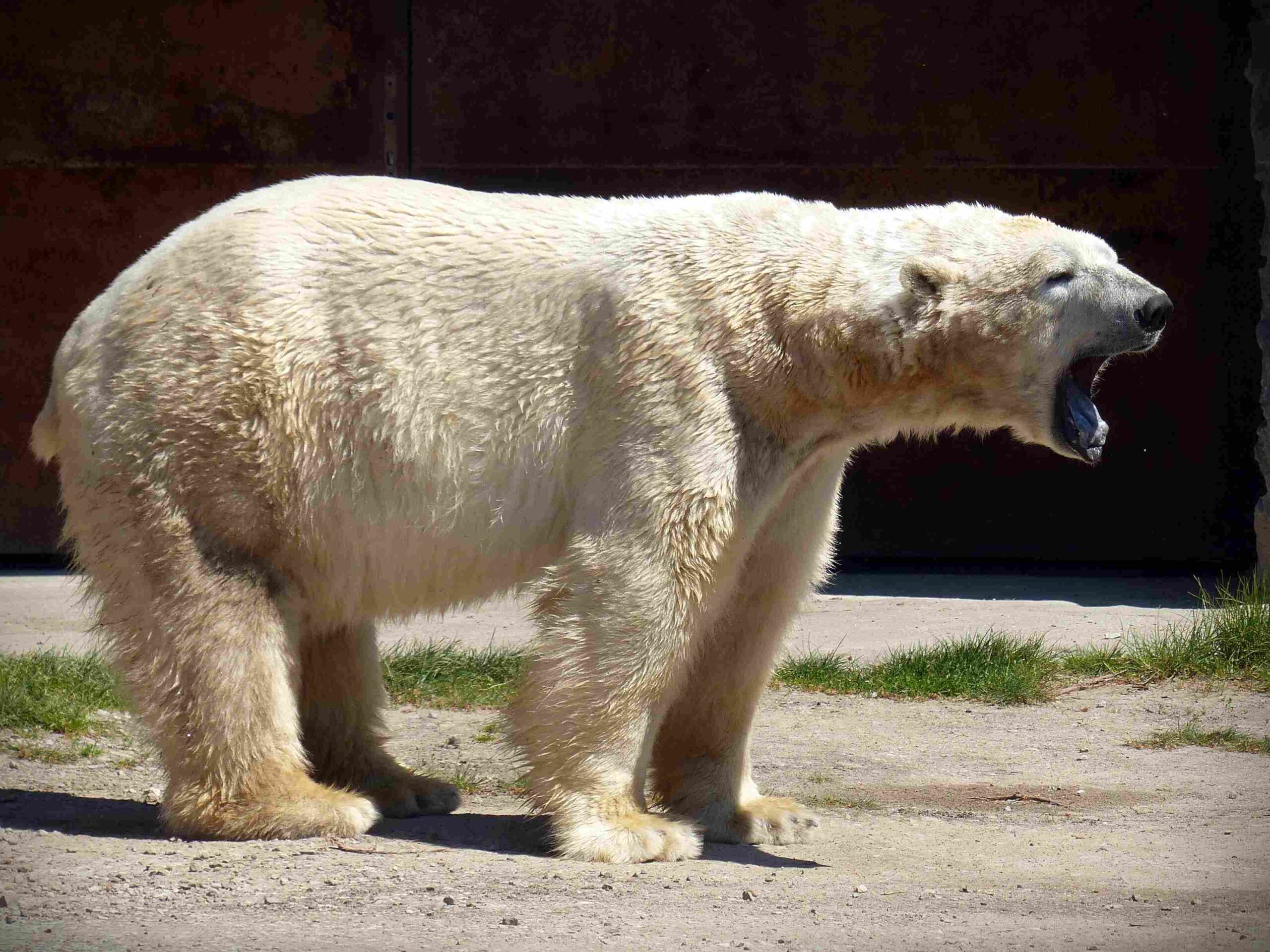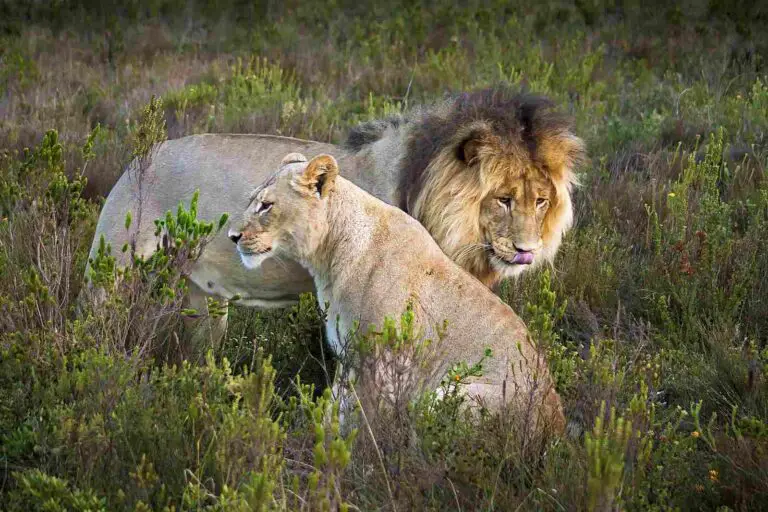Rhino Vs Bear Size, Weight, Ecological Comparison
Rhinos and bears are both impressive creatures, but when it comes to a head-to-head battle, the rhino would likely come out on top. With its superior weight, size, and body armor, the rhino has the advantage over any bear species.
In this article, we will explore various factors that can be used to compare these animals, highlighting the key differences between them.
Key Outcomes
*Biological Comparison
Rhinos and bears are not biologically related in terms of genus and species. They belong to different taxonomic families, with rhinos belonging to the family Rhinocerotidae and bears belonging to the family Ursidae.
*Size and Weight Comparison
Rhinos and bears differ significantly in terms of size and weight. When it comes to size, rhinos are generally larger than bears. The average size of a rhino can range from 10 to 13 feet in length and stand about 5 to 6 feet tall at the shoulder. On the other hand, bears can measure around 5 to 9 feet in length and stand about 3 to 5 feet tall at the shoulder.
In terms of weight, rhinos also outweigh bears. Rhinos can weigh anywhere between 1,500 to 6,000 pounds, depending on the species. Bears, on the other hand, have a weight range of 200 to 1,500 pounds.
*Physical Capability Comparison
The physical capability comparison between rhinos and bears is an interesting aspect to explore. While both animals possess their own unique strengths, the rhino’s weight and size advantage make it a formidable force. With an average weight ranging from 1,500 to 6,000 pounds, rhinos outweigh bears significantly. This sheer mass gives them a considerable advantage in terms of power and force.
When it comes to a confrontation between a rhino and a bear, the rhino’s size and weight advantage can be a determining factor. The sheer force exerted by a charging rhino can overpower a bear, potentially leading to its demise. However, it is important to note that the outcome of such encounters can vary depending on the specific circumstances and the behavior of the animals involved.
In terms of physical capability, the rhino’s strength is further enhanced by its robust build and powerful muscles. These attributes contribute to their ability to charge at high speeds and deliver devastating blows with their horns. On the other hand, bears possess their own unique physical capabilities, such as their agility and climbing skills, which allow them to navigate various terrains and access food sources that may be out of reach for rhinos.
1). Taxonomy
The taxonomy of rhinos and bears reveals interesting insights into their evolutionary history and biological classification. Rhinos belong to the family Rhinocerotidae and are further classified into five extant species: the white rhinoceros, black rhinoceros, Indian rhinoceros, Javan rhinoceros, and Sumatran rhinoceros. Bears, on the other hand, belong to the family Ursidae and are classified into eight extant species, including the polar bear, grizzly bear, black bear, and brown bear.
Despite their differences, both rhinos and bears share common characteristics that place them in the same order, Carnivora. However, it is important to note that rhinos are herbivores, primarily feeding on grasses and leaves, while bears are omnivores, consuming a varied diet that includes both plant matter and meat.
In terms of physical appearance, rhinos and bears exhibit distinct features. Rhinos are characterized by their large size, thick skin, and a single or double horn on their snout. Bears, on the other hand, have a more compact build, covered in fur, and lack horns.
2). Appearance
When comparing the appearance of rhinos and bears, several key factors come into play. Firstly, their coats, fur, and skin differ significantly. Rhinos have thick, tough skin that acts as a protective barrier against potential threats. In contrast, bears are covered in fur, which provides insulation and helps them adapt to various climates.
Another aspect to consider is camouflage. Rhinos have a grayish-brown skin color, allowing them to blend in with their surroundings in grasslands and forests. This helps them avoid detection from predators and potential threats. Bears, on the other hand, exhibit a range of fur colors, such as brown, black, and white, depending on the species and their habitat. This variation in fur coloration aids in their camouflage in different environments.
In terms of stature and build, rhinos and bears also differ. Rhinos are known for their large size and robust build, with a stocky body and short legs. This physique enables them to navigate through dense vegetation and withstand potential attacks. Bears, on the other hand, have a more agile and compact build, allowing them to climb trees and swim proficiently.
Overall, while both rhinos and bears possess unique physical characteristics, their appearances are distinct. Rhinos have thick skin, a grayish-brown coloration, and a robust build, while bears have fur, varying in color, and a more agile physique.
3). Size
When comparing the size of rhinos and bears, it is important to consider their total body length and height at the shoulders. Rhinos are known for their impressive size, with some species reaching lengths of up to 13 feet and standing at a shoulder height of around 6 feet. This makes them one of the largest land mammals on Earth. Bears, on the other hand, vary in size depending on the species. Grizzly bears, for example, can reach lengths of up to 8 feet and stand at a shoulder height of around 4 feet. Polar bears, known for their massive size, can grow even larger, with lengths of up to 10 feet and shoulder heights of around 5 feet.
In terms of size comparison, rhinos generally outweigh bears due to their larger body mass. Rhinos can weigh anywhere from 1,000 to 6,000 pounds, depending on the species. Bears, on the other hand, have a more varied weight range. Grizzly bears can weigh between 300 to 1,500 pounds, while polar bears can weigh between 900 to 1,600 pounds.
When it comes to size, rhinos are larger than bears in terms of total body length, height at the shoulders, and overall body mass.
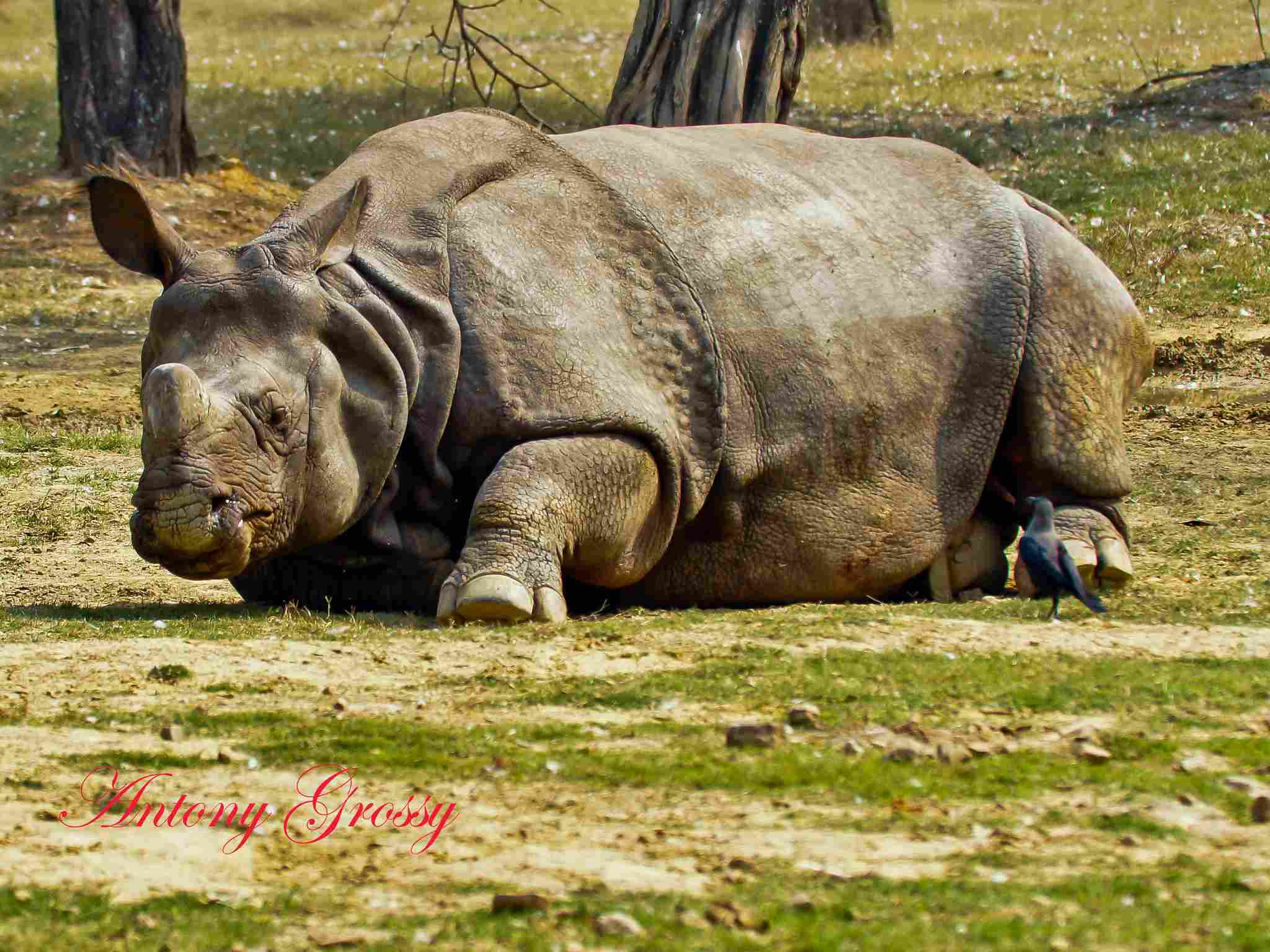
4). Weight
When comparing the weight of rhinos and bears, it is evident that rhinos generally outweigh bears due to their larger body mass. Rhinos can weigh anywhere from 1,000 to 6,000 pounds, depending on the species. This significant weight makes them one of the heaviest land mammals on Earth. Bears, on the other hand, have a more varied weight range. Grizzly bears can weigh between 300 to 1,500 pounds, while polar bears can weigh between 900 to 1,600 pounds.
The weight of an animal plays a crucial role in its overall physical capabilities and ecological niche. Rhinos’ substantial weight provides them with a strong presence and the ability to charge at high speeds when threatened. This weight also aids in their defense against predators and helps them navigate through their natural habitats.
Bears, although not as heavy as rhinos, possess remarkable strength and agility. Their weight allows them to forage for food efficiently and withstand harsh environmental conditions. It also contributes to their ability to swim and climb trees, making them versatile predators.
5). Bite Force
Rhinos, with their powerful jaws and sharp teeth, have an impressive bite force. They can exert a bite force of up to 2,000 psi, allowing them to crush tough vegetation and defend themselves against potential threats. This bite force is essential for their herbivorous diet and for protecting their young from predators.
Bears, on the other hand, possess a formidable bite force as well. With a bite force of around 1,200 psi, bears can easily break bones and tear through flesh. This strength enables them to catch and kill prey, including fish, small mammals, and even larger animals like deer.
In comparison, while both rhinos and bears have significant bite forces, rhinos have a slightly higher bite force than bears. However, it is important to note that bite force alone does not determine the outcome of a confrontation between these two animals. Other factors such as size, weight, and overall physical capacity also play a crucial role in determining the outcome of such encounters.
6). Overall Physical Capacity (Which is Stronger?)
When comparing the overall physical capacity of rhinos and bears, several factors need to be evaluated and compared. These factors include size, weight, bite force, and other physical attributes. By analyzing these aspects, we can determine which animal is stronger and which would prevail in a violent confrontation.
In terms of size, rhinos are generally larger than bears. They can reach lengths of up to 13 feet and stand at a height of around 6 feet at the shoulder. Bears, on the other hand, vary in size depending on the species, with the largest being the Kodiak bear, which can reach lengths of up to 10 feet and stand at a height of around 5 feet at the shoulder.
When it comes to weight, rhinos also have the advantage. They can weigh anywhere between 1,500 to 6,000 pounds, while bears typically weigh between 200 to 1,500 pounds. This significant weight difference gives rhinos a physical advantage in terms of sheer force and impact.
In terms of bite force, as mentioned in the previous section, rhinos have a slightly higher bite force than bears. However, it is important to note that bite force alone does not determine the outcome of a confrontation between these two animals. Other factors such as size, weight, and overall physical capacity also play a crucial role.
Overall, based on the factors we have evaluated and compared, it can be concluded that rhinos have a stronger overall physical capacity compared to bears. However, it is important to remember that in the case of a violent confrontation, the outcome would depend on various factors such as the specific species, individual strength, and the circumstances of the encounter.
7). Habitat
Rhinos are primarily found in grasslands, savannas, and tropical forests. They are well-suited to these habitats due to their large size and herbivorous diet. Rhinos rely on the abundance of grasses and vegetation in these areas to meet their nutritional needs. They have also developed physical adaptations, such as their thick skin and horns, to protect themselves from potential threats in their habitat.
Bears, on the other hand, have a wider range of habitats. They can be found in forests, mountains, tundra, and even coastal areas. This adaptability allows them to thrive in various environments and take advantage of different food sources. Bears are omnivorous, feeding on a combination of plants, berries, nuts, and occasionally meat. Their ability to adapt to different habitats is a testament to their resilience and versatility as a species.
When comparing the habitats of rhinos and bears, it is clear that they have different ecological requirements. Rhinos prefer open grasslands and forests, while bears can be found in a wider range of environments.
8). Lifespan
When comparing the lifespan of rhinos and bears, it is important to consider the different factors that can influence their longevity. Rhinos have an average lifespan of around 40 to 50 years in the wild, although some individuals have been known to live up to 60 years. This relatively long lifespan can be attributed to their large size and the protection provided by their thick skin and horns.
On the other hand, bears have a slightly shorter lifespan compared to rhinos. The average lifespan of bears varies depending on the species, with some living up to 25 years in the wild. Factors such as habitat quality, availability of food, and predation can all impact the lifespan of bears.
It is worth noting that both rhinos and bears can live longer in captivity compared to their wild counterparts. In zoos and wildlife sanctuaries, where they receive proper care, nutrition, and protection from predators, rhinos and bears can live well into their 30s, 40s, or even longer.
9). Behavior
When comparing the behavior of rhinos and bears, several key aspects come into play. Firstly, their feeding habits differ significantly. Rhinos are herbivores, primarily feeding on grasses, leaves, and fruits. They have a specialized lip structure that allows them to grasp and tear vegetation. In contrast, bears are omnivores, with a diet that includes both plant matter and meat. They have a varied diet, consuming berries, nuts, fish, and even small mammals.
Aggression is another behavioral trait that sets these animals apart. Rhinos are generally more aggressive, especially when they feel threatened or during mating season. They can charge at high speeds and use their horns as weapons. Bears, on the other hand, are known for their defensive aggression, particularly when protecting their cubs or territory. They can stand on their hind legs and use their powerful claws to defend themselves.
Vocalization is an important aspect of communication for both rhinos and bears. Rhinos produce a range of sounds, including snorts, grunts, and bellows, to communicate with each other. Bears also vocalize, using growls, roars, and huffs to express various emotions and establish dominance.
In terms of social behavior, rhinos are generally solitary animals, except during mating season when males compete for females. Bears, on the other hand, can exhibit both solitary and social behavior. Some bear species, like the grizzly bear, are solitary, while others, like the black bear, can be more social and form small family groups.
When it comes to parenting, bears are known for their maternal care. Female bears provide extensive care to their cubs, teaching them essential survival skills and protecting them from potential threats. Rhinos, however, do not exhibit the same level of parental care.
-
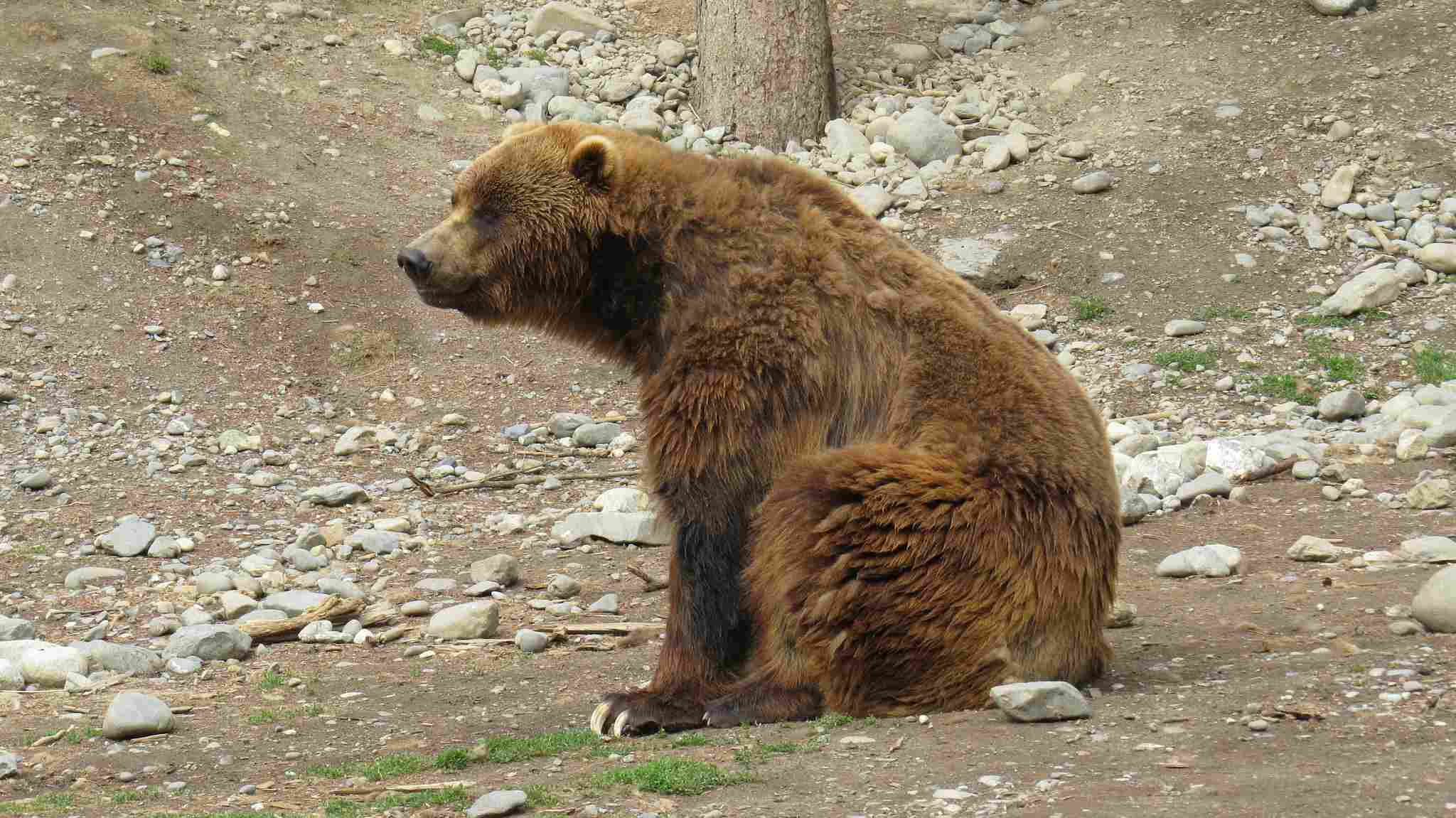
Rhino Vs Bear: Many Bears are Solitary, like Rhinos (Credit: Luke Jones 2014 .CC BY 2.0.)
10). Reproduction
Reproduction is a fundamental aspect of the life cycle for both rhinos and bears. When it comes to their reproductive strategies, there are notable differences between the two species.
Rhinos are viviparous, meaning they give birth to live young. After a gestation period of around 15 to 16 months, a single calf is born. The mother rhino provides care and protection to her calf until it becomes independent. This reproductive strategy allows for a higher survival rate of offspring, as the mother can actively defend and nurture her young.
Bears, on the other hand, are also viviparous but have a shorter gestation period compared to rhinos. The exact duration varies depending on the bear species, but it typically ranges from 6 to 9 months. Bears give birth to one to four cubs, depending on the species and the availability of resources. The cubs are born blind and rely on their mother for nourishment and protection.
In terms of reproductive success, both rhinos and bears have evolved strategies that ensure the survival of their species. Rhinos have a slower reproductive rate, with females giving birth to one calf every few years. Bears, on the other hand, have a higher reproductive rate, with females capable of producing multiple cubs in a single reproductive cycle.
11). Danger Posed to Humans
When it comes to the danger posed to humans, both rhinos and bears have the potential to be a threat, although their behaviors and interactions with humans differ. On average, bears are more dangerous toward humans, than rhinos.
Rhinos, despite their massive size and intimidating appearance, are generally not aggressive towards humans. They are herbivores and prefer to avoid confrontations. However, if a rhino feels threatened or cornered, it may charge at humans as a defensive mechanism. This can result in serious injuries or even fatalities. It is important to maintain a safe distance and avoid provoking or disturbing rhinos in their natural habitat.
Bears, on the other hand, have a reputation for being more aggressive towards humans, especially if they feel threatened or if their cubs are in danger. While bear attacks on humans are relatively rare, they can be extremely dangerous when they occur. It is crucial to be cautious when encountering bears in the wild and to follow proper safety protocols, such as making noise to alert them of your presence and slowly backing away without turning your back.
In terms of the rate of human deaths caused, bears have been responsible for more fatalities compared to rhinos. However, it is important to note that both species generally prefer to avoid human interactions and attacks are often a result of human encroachment into their habitats.
To ensure safety when encountering rhinos or bears, it is recommended to stay informed about their behavior, respect their space, and follow guidelines provided by wildlife authorities.
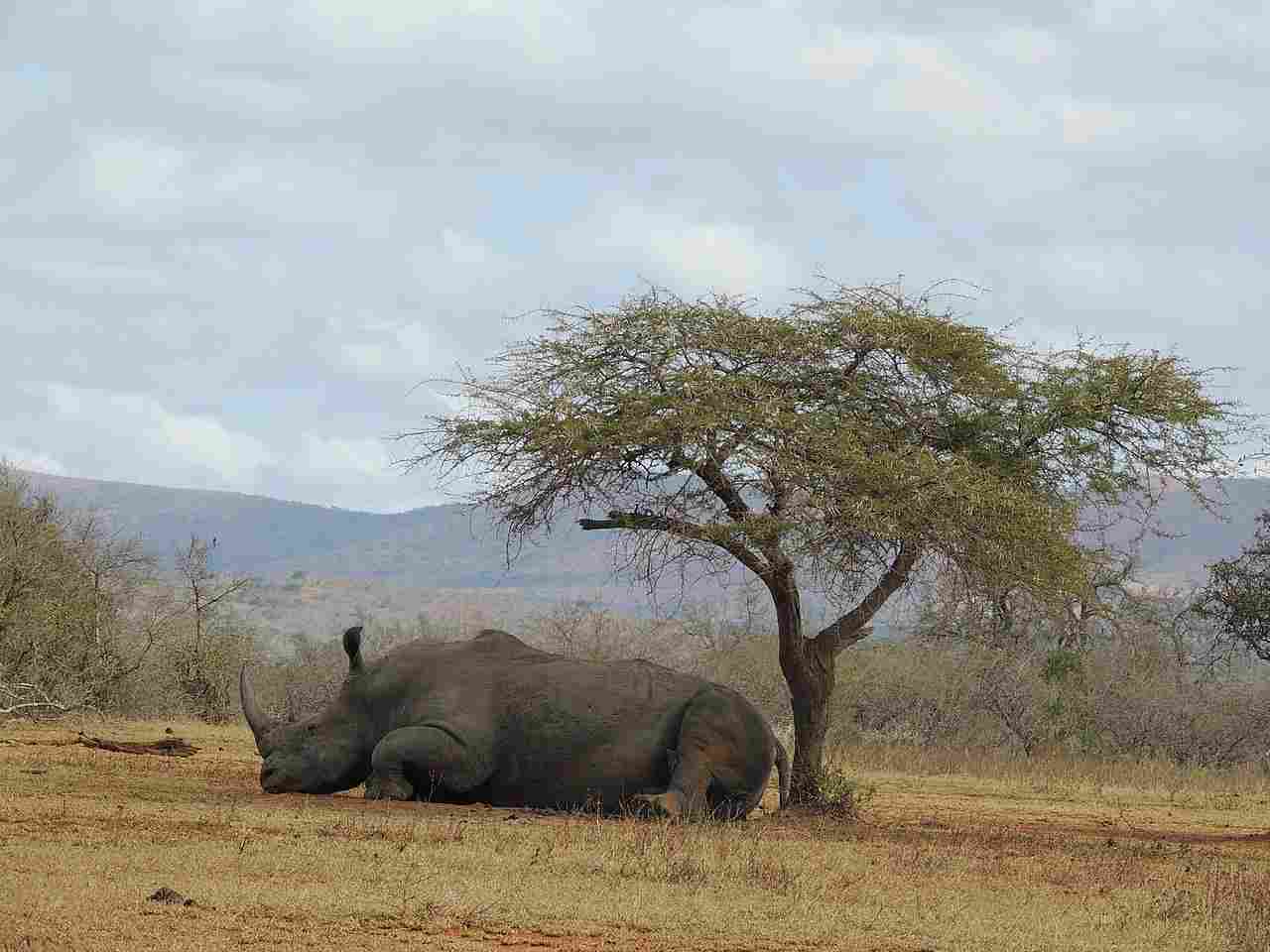
12). Conservation Status
The conservation status of rhinos and bears is a matter of concern due to the threats they face in the wild. Both species are classified as endangered or threatened, highlighting the urgent need for conservation efforts to protect their populations.
Rhinos are particularly vulnerable to poaching for their horns, which are highly valued in some cultures for their supposed medicinal properties. This illegal trade has decimated rhino populations, pushing them to the brink of extinction. Habitat loss and fragmentation also pose significant threats to rhinos, as human activities continue to encroach upon their natural habitats.
Bears, on the other hand, face similar challenges in terms of habitat loss and fragmentation. Deforestation, urbanization, and the expansion of agricultural activities have resulted in the loss of critical bear habitats. Additionally, bears are often hunted for their body parts, which are used in traditional medicine or for trophies. These factors have contributed to the decline of bear populations worldwide.
Conservation organizations and governments are working tirelessly to protect and conserve both rhinos and bears. Efforts include anti-poaching initiatives, habitat restoration, and public awareness campaigns. Strict laws and regulations are also being implemented to combat illegal wildlife trade and protect these iconic species.
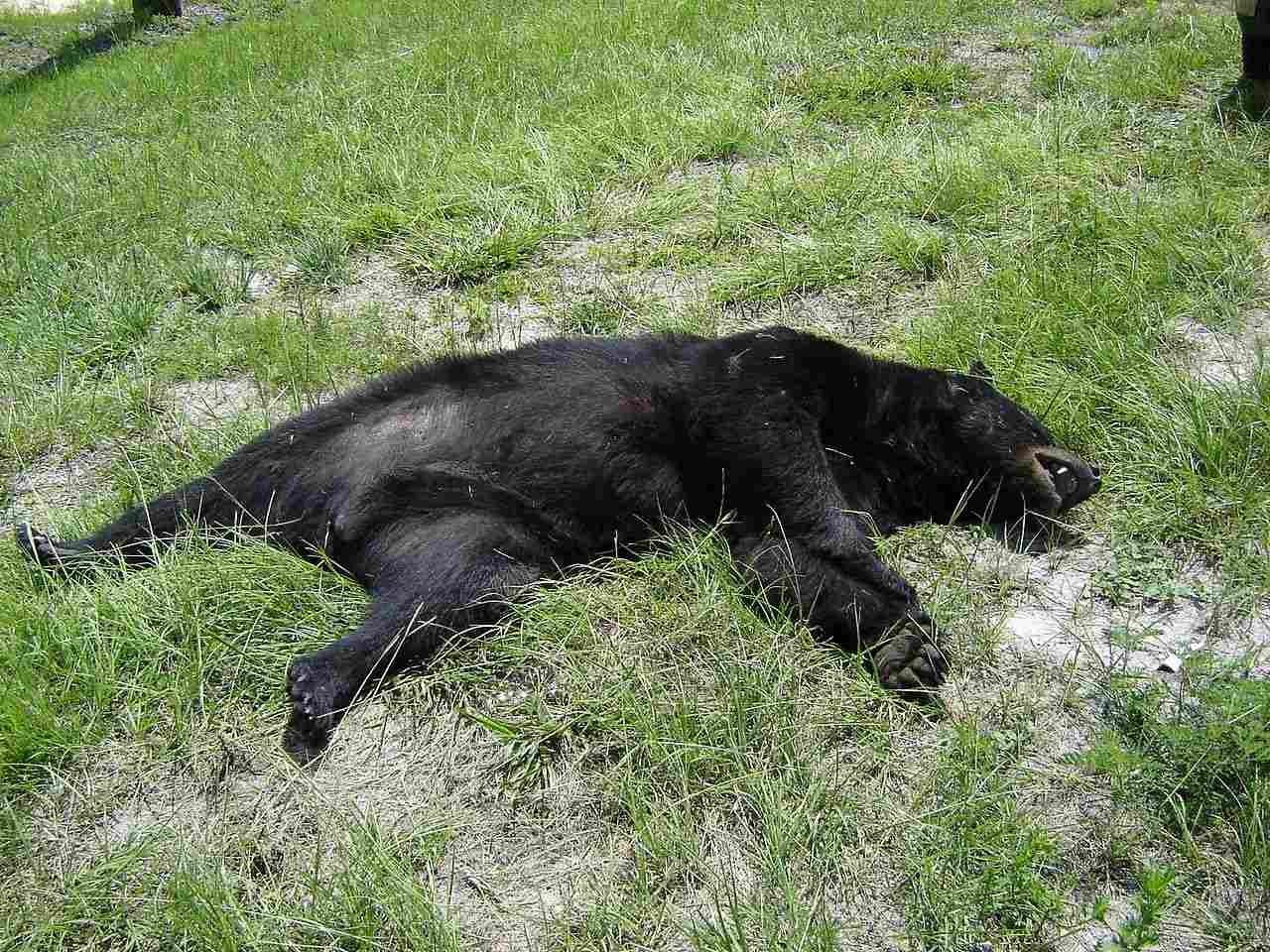
Conclusion
I). SIMILARITIES
In comparing rhinos and bears, several similarities can be observed. Both animals are large and powerful, with robust bodies adapted for their respective habitats. They are also both classified as endangered or threatened species, highlighting the urgent need for conservation efforts to protect them.
Rhinos and bears face similar challenges, such as habitat loss and fragmentation, as well as illegal wildlife trade. Conservation organizations and governments are actively working to combat these threats and ensure the survival of both species.
II). DIFFERENCES
Despite their similarities, there are also notable differences between rhinos and bears. One key difference lies in their physical characteristics. Rhinos have a distinctive horn on their nose, which is absent in bears. Additionally, rhinos are herbivores, while bears are omnivores, with a diet that includes both plant matter and meat.
Another difference is their habitat preference. Rhinos are typically found in grasslands and savannas, while bears inhabit a variety of ecosystems, including forests and mountains.


